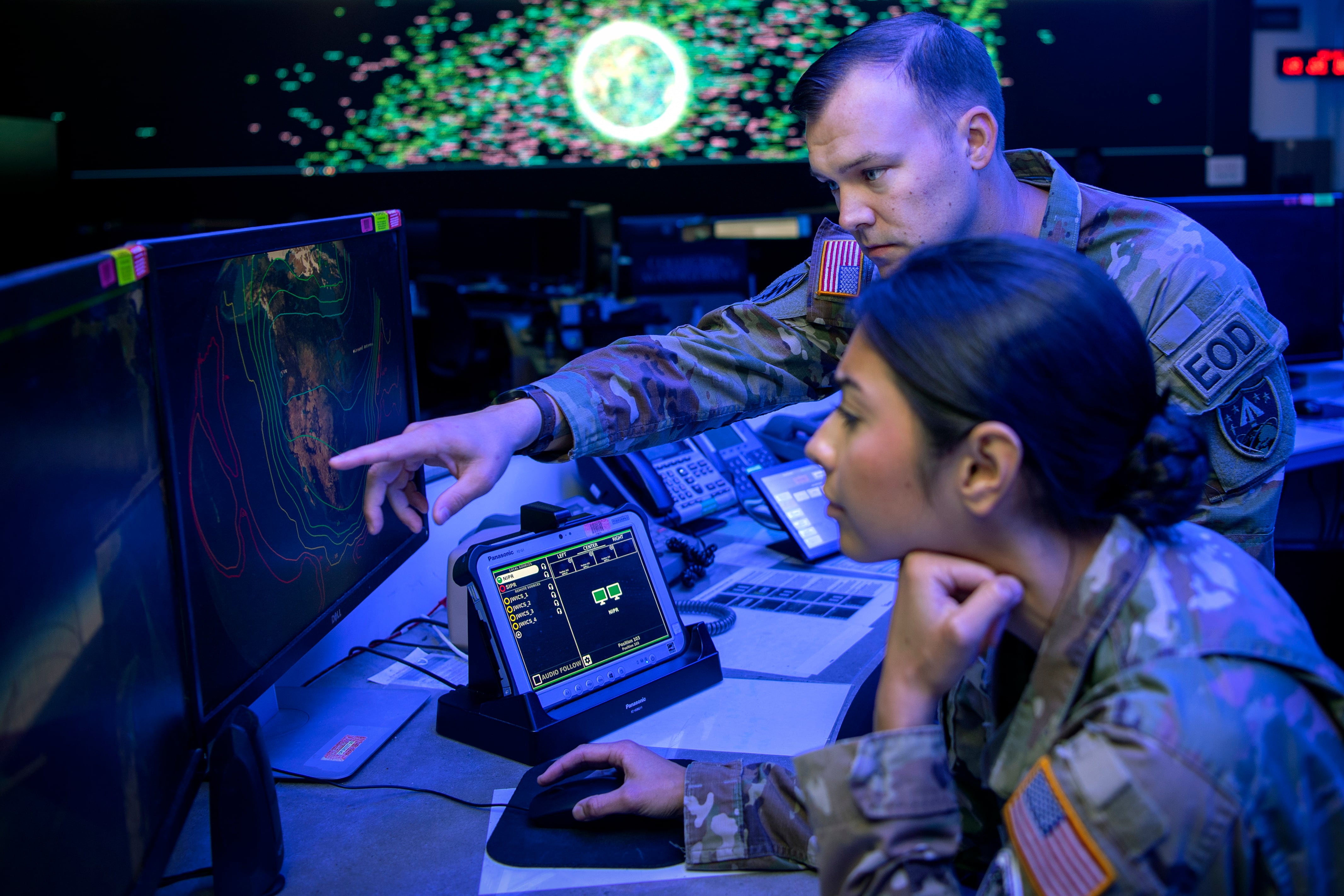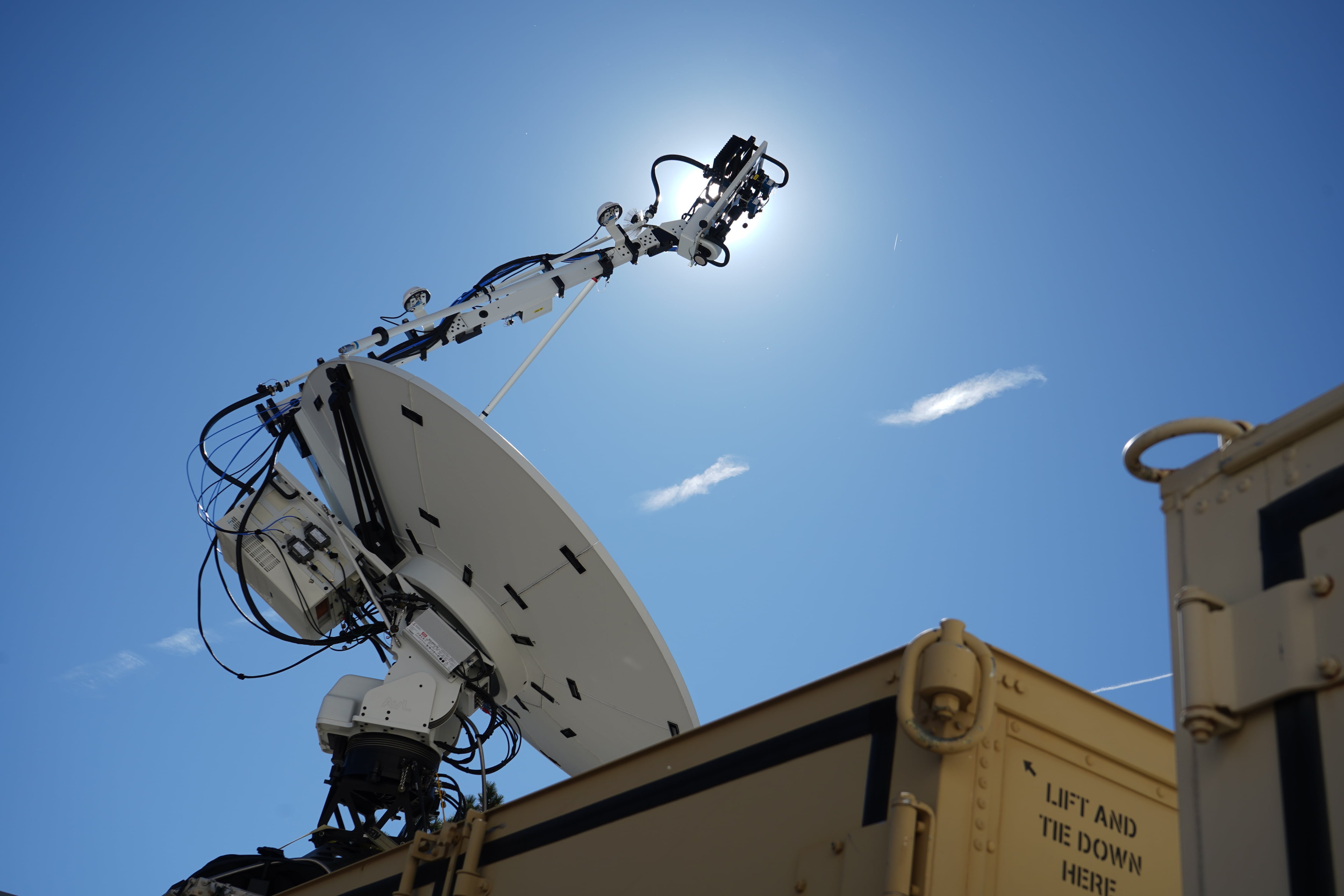The Navy announced last month the groundbreaking of a new operations center for the Naval Air Warfare Atlantic Test Ranges at Naval Air Station Patuxent River. The range, according to the Navy, will enhance ATR's ability to support simultaneous test operations for current and future aviation programs such as unmanned systems as well as live, virtual and constructive battle space environments.
Navy officials confirmed to C4ISRNET that the majority of developmental test for carrier suitability, tanking and mission systems for the MQ-25 Stingray, the Navy's recently unveiled unmanned carrier-refueling aircraft, will be performed at Patuxent utilizing the new aerial test facility.
The Stingray was the highly anticipated follow-on to the Navy's demonstrator carrier-based X-47B Salty Dog made by Northrop Grumman, which was used to examine unmanned capabilities for aircraft carrier operations. There was much discussion surrounding the program during and following demonstrations concerning the aircraft's role being tilted more toward intelligence, surveillance and reconnaissance or strike capabilities. Ultimately, the Navy opted for a refueling platform because "we feel the need to extend the strike range of the air wing out, and this will primarily be a mission tanker to extend that range out," Chief of Naval Operations Adm. John Richardson said, highlighting the need to penetrate so-called anti-access/area denial regions, which aim to create significant standoff ranges for adversaries. "Those are the features that will drive the design of the airframe."
Navy officials also confirmed that the OPNAV-N99, or the Navy’s unmanned directorate, won't play a role in the testing phase at the facility because they "cede their role with systems to other relevant commands/entities once those systems enter testing." N99 is focused on prototyping and rapidly equipping the force with cross-domain unmanned platforms.
Mike Novak, deputy director for the Unmanned Warfare Systems N99, explained last May that his office works to develop what comes out of the science and technology community, get a rapid prototype to users, and if it doesn’t work, return it to the S&T offices for refinement. The director of N99, Rear Adm. Robert Girrier, has also explained that within the scope of his office’s approach to get solutions to the fleet in a rapid fashion, "terminat[ion] is OK. It wasn’t quite what we thought it was, maybe send it back," he said in a January appearance at the Center for Strategic and International Studies.
The Navy also said the new 17,000-square-foot addition to the advanced test range facilities will feature secure, multipurpose mission test cells to support current and future flight test programs such as the Next Generation Jammer. The Next Generation Jammer is designed to replace the legacy ALQ-99 and will be fielded on the E/A-18G Growler, the Navy’s premier aerial electronic attack platform. The Next Generation Jammer is "about 10 times the power of what we typically put out in the ALQ-99" and "ballpark, quadruple[s] the number of assignments it can handle" from the ALQ-99, said Capt. John Bailey, the Navy's program manager of Airborne Electronic Attack Systems, at the 2016 Sea Air Space seminar in May.
"The reason we are purchasing the Next Generation Jammer — [the] first increment will reach initial operational capability around 2021 — is that the threat is getting more and more advanced. And that threat is in the electromagnetic spectrum. The next war is going to be fought in the electromagnetic spectrum," Rear Adm. Michael Manazir, the Navy’s director of air warfare, toldCongress in April.
"It's great to see this project underway because the new operations center will help us meet the requirements of future major Navy programs, reduce scheduling conflicts and provide more secure information-processing capability for our test ranges," said Rear Adm. Shane Gahagan, the commander of the Naval Air Warfare Center's Aircraft Division. "That, in turn, supports delivering new systems to the fleet faster."
"I'm excited because this facility will provide well into the future the capacity and capability to get the mission accomplished on time. In short, this addition allows us to support the future now," said Robert Vargo, ATR director.
The Navy expects construction will be completed by late 2017.
Mark Pomerleau is a reporter for C4ISRNET, covering information warfare and cyberspace.








